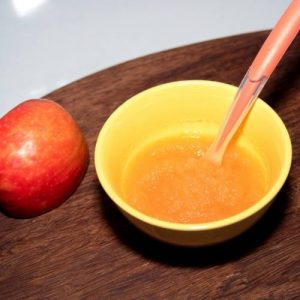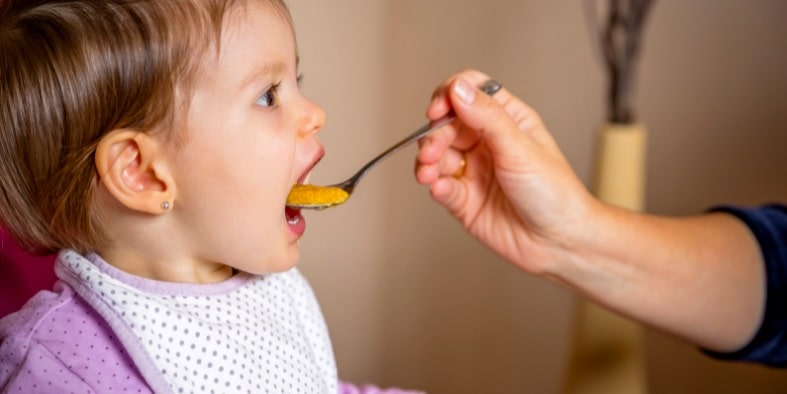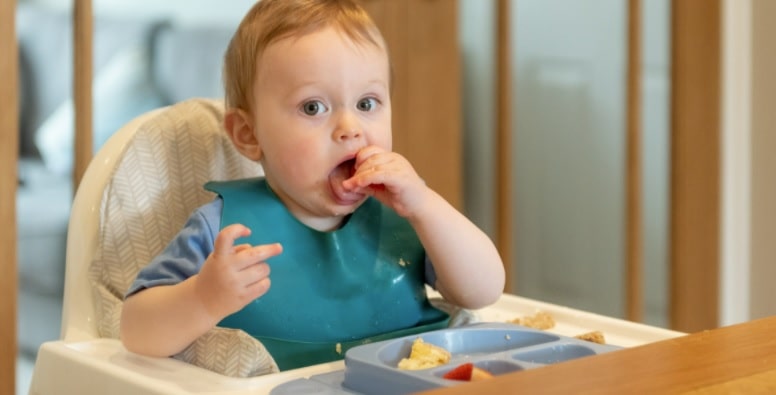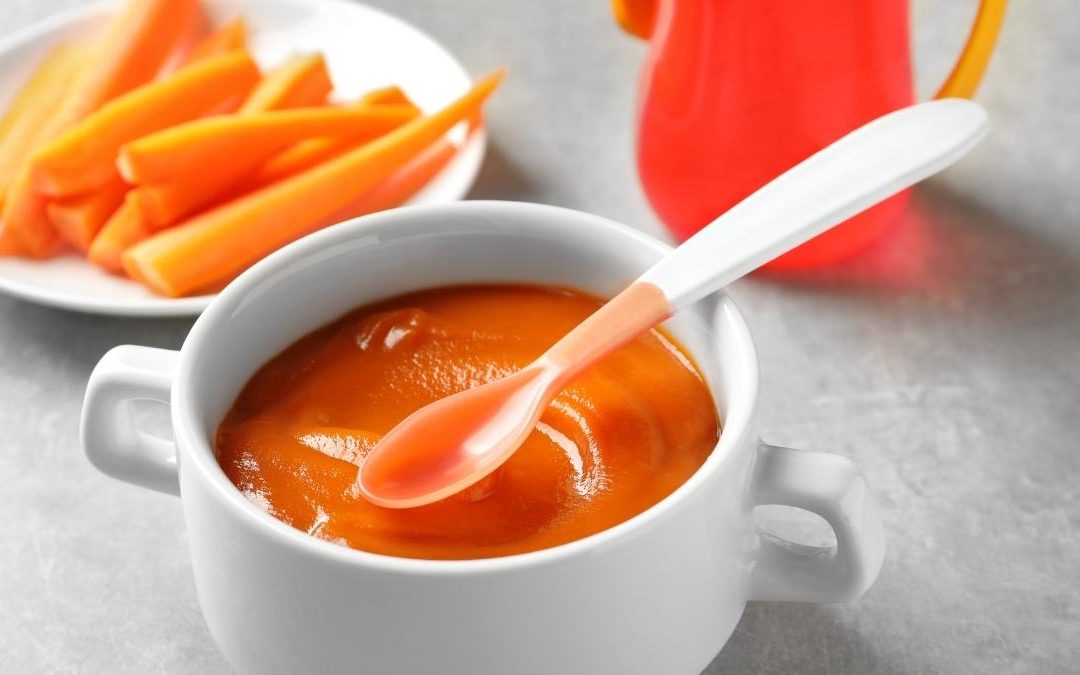When it comes to introducing solids to your baby there is one question on every parent’s mind. Do I look to use pureed food or baby-led weaning? Here’s a closer look at the pros and cons of both practices.
Introducing solids to a baby can be a very exciting yet challenging prospect. Exciting, because your child is achieving a huge milestone and challenging since you’re probably wondering where to start.
Despite the zillion pieces of advice and research findings, if you’re still wondering which direction to take, ‘puree food or baby-led weaning,’ here is a breakdown of which may be right for you.
But first, let’s find out some important facts and ideas around the types of food to introduce to your baby, and when.
When To Introduce Solids To A Baby?
According to the American Academy of Pediatrics, you can introduce other food, (besides breastmilk and formula) after your baby turns 6 months of age. But, before that, check to see if your baby:
- Has attained good head and neck control.
- Can sit independently with little or no support.
- Has adequate oral motor skills such as opening the mouth when food is offered, an integrated tongue thrust reflex, and proper swallowing.
- Has curiosity about solid food, such as reaching out for the food that you are eating.

What Solids Must You First Introduce To Your Child?
There is no particular order for introducing different food groups to your baby. However, our goal is to enable them to enjoy a full nutritious meal by one year of age.
Therefore, be sure to offer different food groups such as cereals, vegetables, fruits, meats, and fish at different stages, so that your baby gets used to the tastes of it all.
There are many cool and informative infographics if you want a little extra help deciding what food to start and when. With most of them protected by copyright, we suggest you search Google and see which one works for you.
Pureed Food:

In this method, solids are mashed up or pureed into a smooth mixture and are spoon-fed to the baby.
The food varieties are introduced one at a time, every few days, to make sure that the baby has no adverse reaction to it.
With time, you can slowly increase the consistency of food, by making it lumpier/ less pureed. This is followed by providing chunkier pieces and finger foods until finally, the baby eats the same food as the rest of the family.
Pros:
The advantages of introducing solids through puree food are that parents can:
- Control the texture and variety of the food, as well as the quantity and pace of the meal. Children also get used to more flavors through this method.
- Ensure that the nutritional requirements of the child are met.
- Enjoy a stress-free and mess-free mealtime.
Cons:
On the other hand, challenges of pureed food feeding include:
- It is more time-consuming and requires more work as separate meals are to be prepared for the baby.
- It is more parent-directed than child-centric.
- Parents may miss out on their baby’s cues which indicate that they are full. When spoon-feeding, parents tend to continue until the quantity they have prepared is over. This is instead of attending to cues like spitting, refusing to open their mouth, turning the face, or shoving the spoon away.
- Your child may take a longer time to transition from consuming pureed food to other consistencies.

Baby-Led Weaning:
With this strategy, the autonomy lies with your baby. In Baby-Led Weaning, your child independently consumes the variety and quantity of food they desire, by feeding themselves, either using hands or cutlery. Rather than creating separate individual pureed meals, the child learns to eat the same food as the family at mealtimes.

Advantages:
Some parents prefer to go the baby-led weaning route as it:
- Facilitates independent eating skills in your child.
- Teaches children to chew and swallow, as well as self-regulate their feeding, by stopping when their tummies are full.
- Teaches the child appropriate table manners.
- Less time-consuming and difficult as no separate food is prepared for the child.
- Promotes family bonding and communication, as family mealtimes become a norm in your child’s schedule.
Disadvantages:
The challenges with baby-led weaning are that:
- There is always a safety concern. Since food is not being pureed, we must ensure that they do not choke or gag on the food provided. To keep them safe, always supervise their feeding. You could also cut up larger pieces of food into smaller pieces to prevent choking.
- It is not easy to identify any food allergies. Since you are introducing different types of food simultaneously, it can be harder to identify which food your child is allergic to.
- Your baby may not consume the required amount of food. This is typical in the initial few months of baby-led weaning when babies are just exploring and learning (grasping and taking the food, bringing to the mouth, biting, chewing, and swallowing) the process of eating. But, as they develop the skills and identify their preferred tastes, your baby will gradually start increasing the quantities of food they consume.
- It is extremely messy! You’re going to need plenty of drop cloths and baby bibs and prepare for cleaning up not just your child’s high chair, but the floors, walls, and even the ceiling (if your child has a really good throwing arm).

Deciding Between Puree Food and Baby-Led Weaning
The decision to go with pureed food or baby-led weaning ultimately lies with two factors – your child and yourself.
Keep in mind that every child is different and what worked for others may not be ideal for your child.
There is always a third choice, and that is to embrace both the puree food method and baby-led weaning. For instance, you could use the pureed method to introduce certain food groups while using baby-led weaning with others. Or, try pureed food when you are pressed for time and encourage self-feeding at other times.

Ultimately, it’s best to be flexible when introducing solids to a baby. Experiment with either or both of the methods to identify what works best for your child. Also, trust your instincts, and let your child’s cues and eating habits help you maneuver between puree food and baby-led weaning.
For older children, we have a great article on Parenting Tricks To Get Your Kids To Eat Their Vegetables. If you are having a problem weaning off pacifiers with your kids, here’s our advice and tips.
My name is Andrea Thompson and I’m a home based freelance writer. I’m 23 years old, married to my best friend, and mother to a wonderfully independent and opinionated 3 year old girl and step-mother to a sweet seven year old boy. I live in a tiny, little town in Kentucky, where I spend my free time fishing with my kids.
Writing has always been my passion, which I followed through high school, and for a while in college. Life happened, and once I discovered we were pregnant, I switched directions; opting for the healthcare industry because of the stability.
Finally, years later, I was in a place where I could leave the day job that never truly made me happy, and pursue my dreams. I’ve built, and am still building, my writing career from scratch. But, I’m passionate and I’m good at what I do. And, in the end, I can prove to my daughter that she can do anything she wants with this life.





